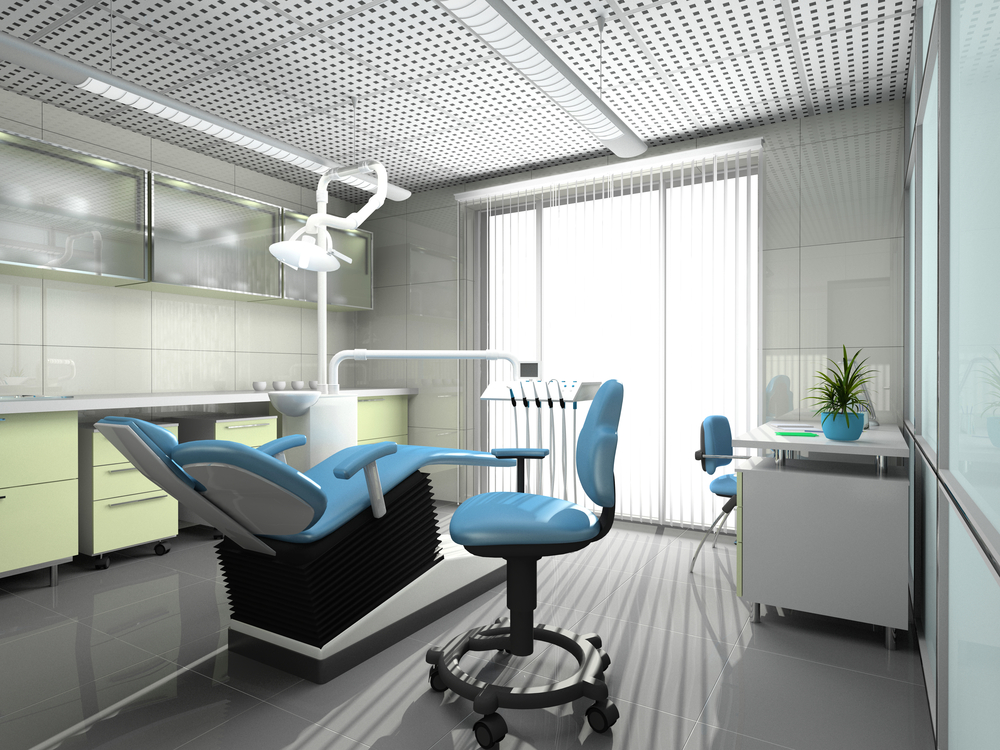Contact Us
or call 972-77-7100460
Positioning

the struggle is not between products, but between perceptions." In simple terms and in connection to dental marketing, the competition is less to do with who the most professional dentist is, but with which dentist is "perceived" as the most professional. Have no doubt - "perception is reality!" Dentists may be extremely professional in terms of actions, but if they cannot produce a professional persona, the clients will perceive them as unprofessional and will not set foot in their clinic. This equation works in the opposite direction as well - we all know mediocre dentists who manage to create a professional aura and turn their clinic into a gold mine.
"Perception" is in fact an image. Let's take an example from the world of brands: "Coca-Cola" is supposedly considered to be the enemy of health, but it is a huge success in the battle over consumers nevertheless, this is because marketing experts have succeeded in creating a positive perception of the product as one that helps you "enjoy life". On the other hand, other inexpensive sweetened drinks, which are also considered to be enemies of health, are perceived negatively by consumers, because of their low prices and especially because they have never supported their image through advertising or other marketing activity.
The dentist is also located on the clients' perceptual scale, he or she can be perceived as positive - professional / empathetic / patient / sympathetic / gentle - which will lead to success, or alternatively, as negative - unprofessional / expensive / insensitive / rough /impatient – which will keep customers away. From my experience with many dentists, one thing is clear - the most successful dentists are those who have succeeded in producing a positive perception of themselves and vice versa.
The good news is that perception is something that can be generated. The first step in producing a positive attitude toward a dentist or a clinic is to internalize that it is crucial to success. Paradoxically, I have encountered quite a few professional dentists who fail in the creation of perception, for the simple reason that they are so confident in their professional abilities that they do not feel they have to make an effort to be perceived as professional and refrain from marketing themselves to customers.
However, precisely because clients cannot measure the dentist's professional qualities, the perception which he or she succeeds in creating is an exclusive reality for the client. So it follows, then, that the concept is built on external characteristics. The clients assemble a "puzzle" with fragments of information and generate a perception of the dentist and the clinic.
For example, if the dentist is the director of the oral and maxillofacial department of a known hospital, the client will immediately conclude that he or she is a professional. Additional data, such as the fact that the dentist is an expert / graduate of a prestigious dental school with more than 15 years of experience / has an Innovative clinic, may also improve his / her professional perception in the customers eyes. The trick is to know how to leverage this information and inform customers about this unique data, in order to create an attractive perception of the dentist and the clinic. It is no accident that many professionals hang certificates of training on the walls of their offices - the goal is to improve their professional perception in the customers eyes.
Not surprisingly, external features, which appear to be unimportant, create perception. A customer entering a clinic that is tastefully decorated, in which the staff is dressed in contemporary uniform outfits, and in which the dentist presents the diagnosis with an intra-oral camera on a plasma screen, will formulate a professional and innovative perception of the clinic. Of course - the same logic works in the opposite direction.
There are 3 very simple ways for any clinic to strengthen and improve its positioning and the dentist's positioning in the customers eyes:
1. A clinic brochure - you'll be surprised to hear this, but new customers entering the clinic for the first time are very interested in who is going to examine and maybe treat them. Where did they get their training? How many years of experience do they have? How long does the clinic exist? Does the clinic perform dental implants and complete oral rehabilitation? etc. In reality, however, a strange situation occurs - in the absolute majority of the clinics, customers enter an examination, when they do not have all the information about the dentist or the clinic. They often receive a proposal for a full rehabilitation program at a very high cost, and are expected to make a decision on site.
It is in the clinic's interest, first and foremost, to inform new customers, and even existing ones, about the clinic's competitive advantages: what training did the dentist undergo, how long has the clinic existed, what are the variety of treatments performed at the clinic, etc.
All these important factors, which may strengthen the positioning and perception of the clinic, can be conveyed to the customer, in a simple and clear manner, with the help of an informative brochure. The brochure should not be just placed in the waiting room between the newspapers, in the hopes that the clients will take one on their own, but must be given prior to the examination (together with the medical questionnaire): "Ms. Smith, you are invited to read about the clinic before the examination." You can be sure the customers will read it and be very interested in the clinics background information and in who might perform the treatment. Additionally, the brochure should be attached to the clients' treatment plan, preferably within the folder, In order for them to receive "supportive information" about the clinic, while they are receiving suggestions from several clinics and debating where to receive care.
Imagine Mr. Smith receiving offers from 3 different clinics. Two clinics give him a simple treatment plan (as most clinics do), but your clinic, in addition to the treatment plan, gives him a brochure in a folder, with supportive information about the competitive advantages of the clinic. Well, Ladies and gentlemen, there is a high probability that the client will decide to turn to you for treatment, thanks to the professional impression that you have succeeded in formulating.
2. Certificates of Training – It is no coincidence that certificates of training and education can be found hanging on the walls in offices of accountants and lawyers. As stated, customers have no way of appreciating the professionalism of free professionals and one of the ways to help them is to do so is hanging certificates that convey the message (to the subconscious mind of the client) "I am educated and well-trained."
A considerable number of dentists see the presentation of training certificates as an unnecessary act and invest mainly in a beautiful and innovative design for the clinic. Well, this mistaken thinking stems from two main reasons - the first, the dentist examines the matter from a doctor's point of view ("you can receive a certificate after every two-day course") and not from the client's point of view ("Wow! A very educated dentist"). The second reason is that most interior designers and architects, who help design clinics, do not bring the marketing aspect into consideration, but only the aesthetic point of view.
There are many dental clinics with beautiful and innovative design, but they miss the main point – the emphases on professionalism. As stated, professionalism is the most important parameter for customers when choosing a dental clinic. It is more important to new customers, sitting in the waiting room to know they have arrived at a professional institution, by creating an impression with documents hanging on the wall, indicating that the dentists in the clinic received training in dental implants at a well-regarded university, and a diploma from a well-known dental school, or a license for general anesthesia, than to see some beautiful paintings and an avant-garde-style statuette.
Of course, design is important as well and a clinic should be beautiful and pleasing to the eye, but these features are not as important as training certificates. Allow for a combination of elements, but stick to the rule – certificates should be placed in the most strategic places. For example: in the waiting room, the treatment room, and in the office. In short, they should be placed where the customers are sitting. Beautiful and matching frames for these documents, can contribute here as well.
3 . Uniforms - Yes, even the dentist and clinic staff have an impact on the clinic's positioning and perception. A dentist wearing an old and stained coat with an ink stain on the front pocket will be perceived in the clients subconscious as an old-fashioned and unprofessional dentist, and vice versa. Therefore, it is not worth saving on uniforms – and although it's convenient to use disposable coats, they don't look good and do not broadcast professionalism.
Another important matter, in the context of the uniform - a dentist coat and jeans do not work together. A dentist dressed in jeans, looks like someone who has been sitting in a cafe and when the time came, put on a coat and began to work. It is best to wear a full uniform, including pants. Doctors working in hospitals are obliged to wear full uniforms for a reason, beyond the most important point, which is sterilization of course.



